Tennis Shoes – 7 Steps to the Best Model
Tennis shoes are an important part of the basic equipment for every player. One of the main functions of tennis shoes is to give you complete freedom of movement while protecting you from injury.
They help you to get the necessary grip on the court so that you can reach every ball. Tennis shoes also help to protect your feet and joints during the game. In order to achieve your best performance, it is important to play with the right shoes.
On this page, we present all the features to help you find the right shoes. With our 7 point guide we show you step by step how to choose the perfect model.
Contents
1. Surface
2. Stability
3. Cushioning
4. Fit
5. Upper Material
6. Weight
7. Durability
Tennis Shoes vs. Running Shoes – The Differences
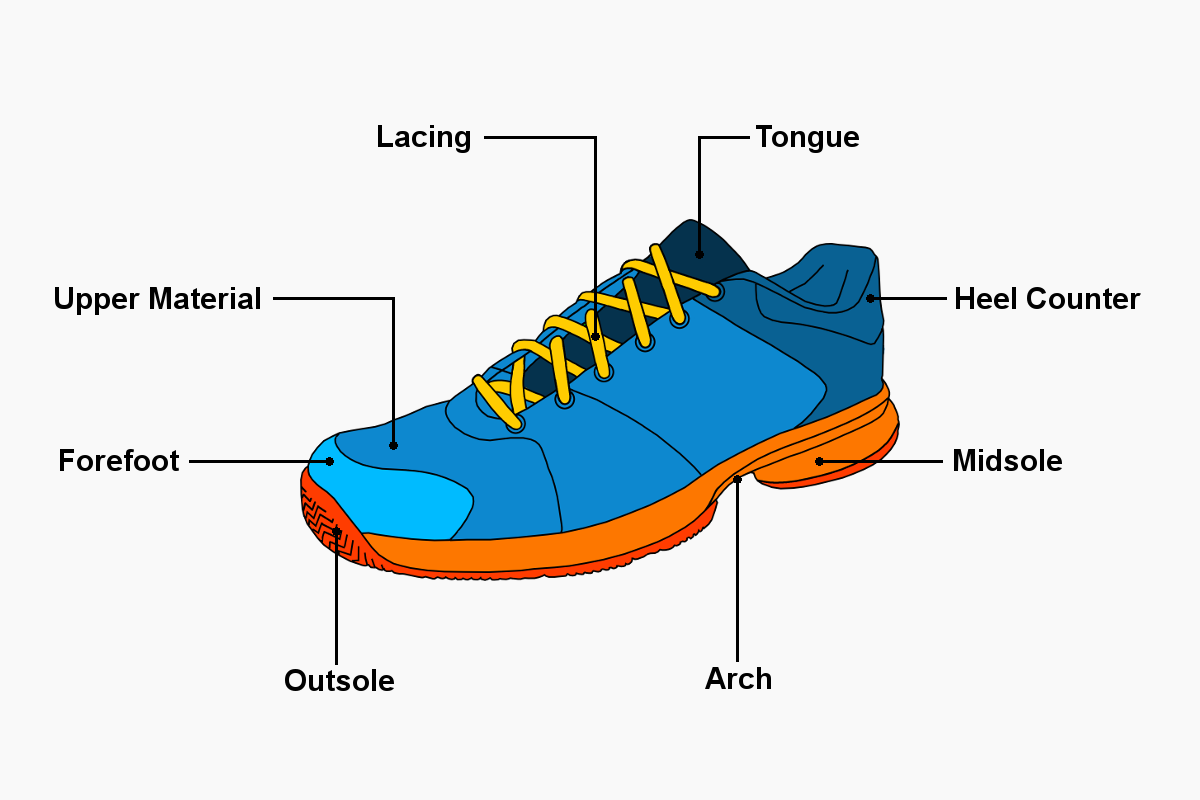
At first glance, the construction of tennis shoes and running shoes looks the same. In fact, the tennis shoe is similar to the running shoe in many ways. However, there are some important differences between the two types that are not immediately apparent.
Use
In general, running shoes are designed for jogging, running and sprinting. With these shoes the focus is on forward movement. In addition, the running speed is rather constant.
Tennis shoes have to meet completely different requirements. Because in the game, fast changes of direction are the rule. You have to be able to accelerate as well as brake with the shoes in a short time.
In addition, you don’t just run in one direction when playing tennis, but make lots of lateral movements.
Material
Overall, tennis shoes are characterized by their high stability. They prevent you from buckling during the rally. Running shoes, on the other hand, are considerably softer in order to offer the athlete a certain flexibility.
For comparison, you can take both shoes and press them together. Tennis shoes are relatively stiff and therefore hardly give way. Running shoes, on the other hand, can be deformed quite easily.
Midsole
Another difference between both types is the cushioning. Running shoes generally have a thicker midsole, as runners attach great importance to the feeling of comfort.
Tennis players want to have more contact with the ground under their feet. Therefore tennis shoes have a thinner midsole for more control on the court.
Outsole
In addition to the midsole, the outesole of the shoes also varies. In tennis shoes, the outsole is specially designed for high traction.
It is made of a very resistant material, as it is subject to heavy wear on the tennis court. In addition, there is a choice of different profiles so that you get the perfect grip on any surface.
In contrast, the sole of running shoes is made of a soft material. They would wear out quickly when playing tennis.
Furthermore, running shoes have a very deep profile. This profile is unsuitable for playing tennis because it grabs too far into the ground. Under certain circumstances you could even damage the court with these shoes.
Price
You see, it is extremely important that you use the right shoes on the court. Although tennis shoes are slightly more expensive than running shoes, they are definitely worth the investment.
Tennis shoes give you the agility and comfort you need to handle every rally. In particular, they help you to reduce the risk of injury considerably.
Tennis Shoes – The 7 Step Guide
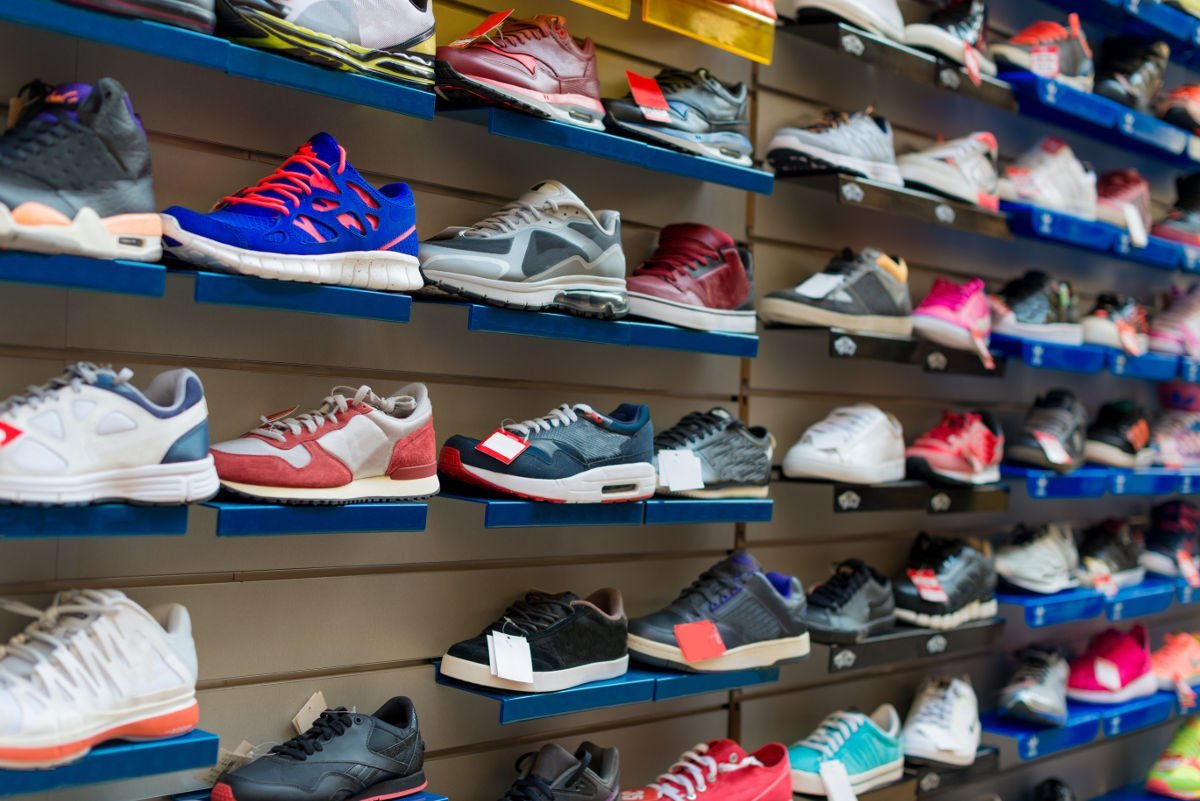
We have created a list of 7 points that you should definitely have in mind when choosing a new tennis shoe. By following the individual steps you will find out which model suits you best.
1. Surface
In the first step, look at the surface on which you play tennis. Since every surface has a different texture, the shoe needs a special profile that is adapted to the court. It plays a big role how much yuo can slide on the court. On slippery surfaces, for example, your shoes need more grip.
Furthermore, the characteristics of the court determine how quickly the sole of your tennis shoes wears out. Basically, we distinguish between four different types of tread for these surfaces:
- Clay court
- Hard court
- Grass court
- Carpet court
Clay Court Tennis Shoes
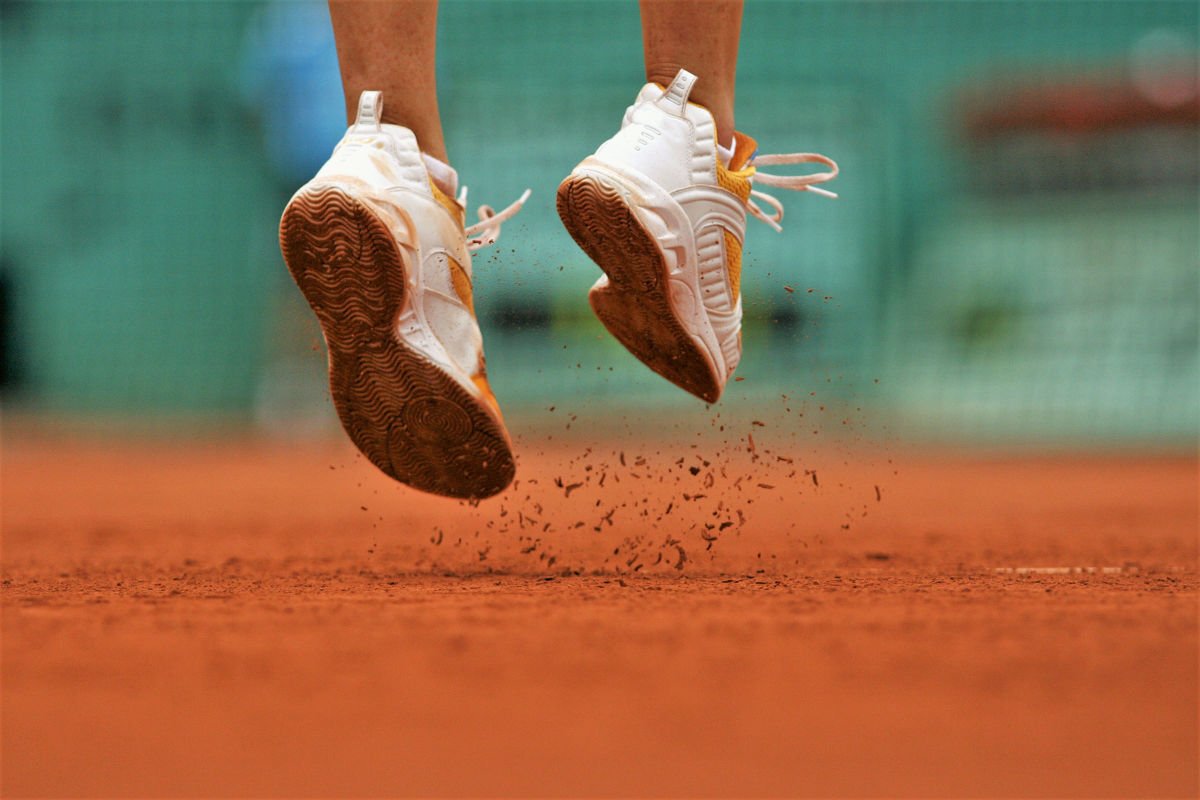
If you play tennis on clay, you are probably aware that this surface is very slippery. Therefore you need shoes that give you a solid grip on the court.
The tread of clay court tennis shoes consists of many individual grooves arranged in a zigzag pattern. This is also called the “herringbone pattern”. Of all four tread types, this is the deepest, so the shoes provide a good grip.
This prevents you from slipping on the ground uncontrollably. However, the tread is not too deep, so that you can slide into the balls in a controlled manner. You can also use the shoes indoors if you play on a granular floor.
Tip: Clay can easily collect and stick to the deep tread of the shoe. We advise you to tap your shoes regularly when playing to get rid of the clay. Then you will have the maximum grip with your shoes again.
Hard Court Tennis Shoes
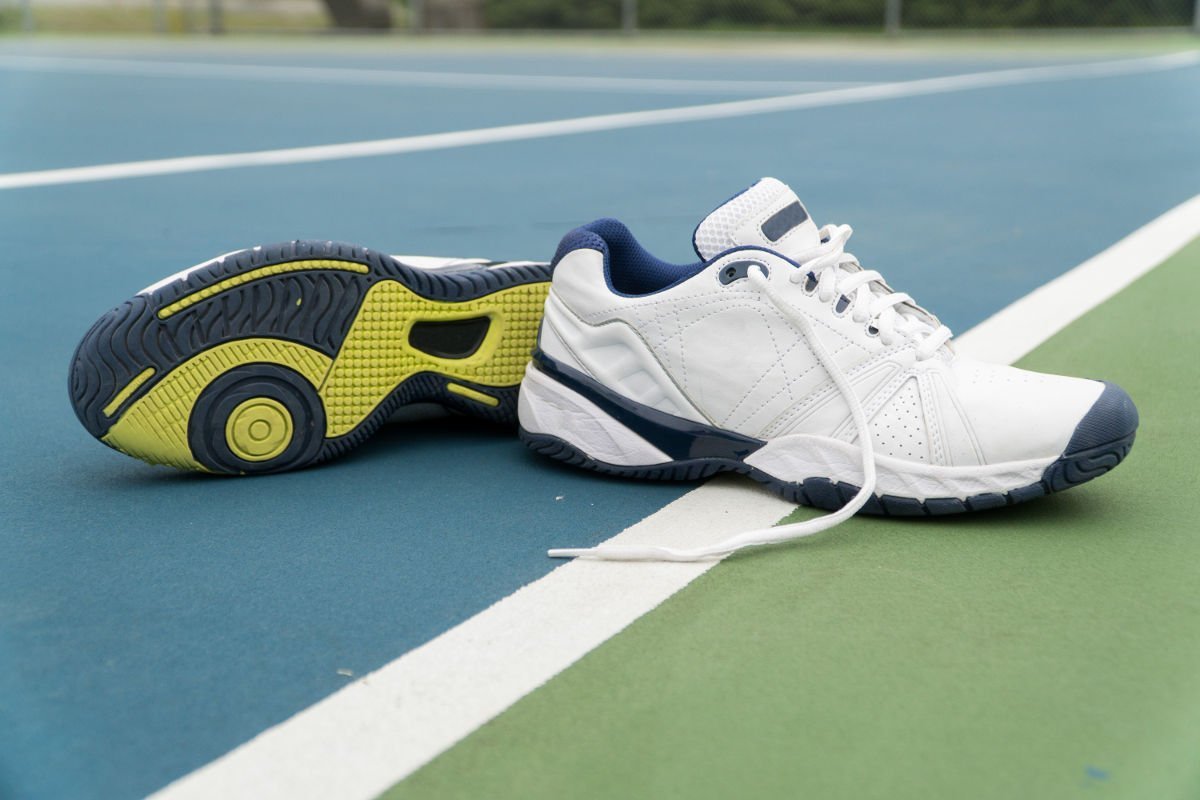
In contrast to the clay court, the hard court has a more grippy surface. This refers especially to acrylic or concrete courts. Slipping away is possible on this surface, but not so easy anymore. For playing on the hard court we recommend the so-called “Allcourt” shoes.
Similar to the clay court shoes, the profile of the allcourt shoes is largely composed of a herringbone pattern. There are also other circular patterns. Since sliding is generally more difficult on hard courts, these shoes have a flatter profile.
As the name suggests, allcourt tennis shoes allow you to play on many different surfaces. However, you should keep in mind that you will always have to make a compromise with these shoes.
For an occasional match on sand or grass, these are fine. However, if you play tennis on other surfaces all the time, we advise you not to use the allcourt shoes. In that case, it is better to use the specialized soles.
Grass Court Tennis Shoes
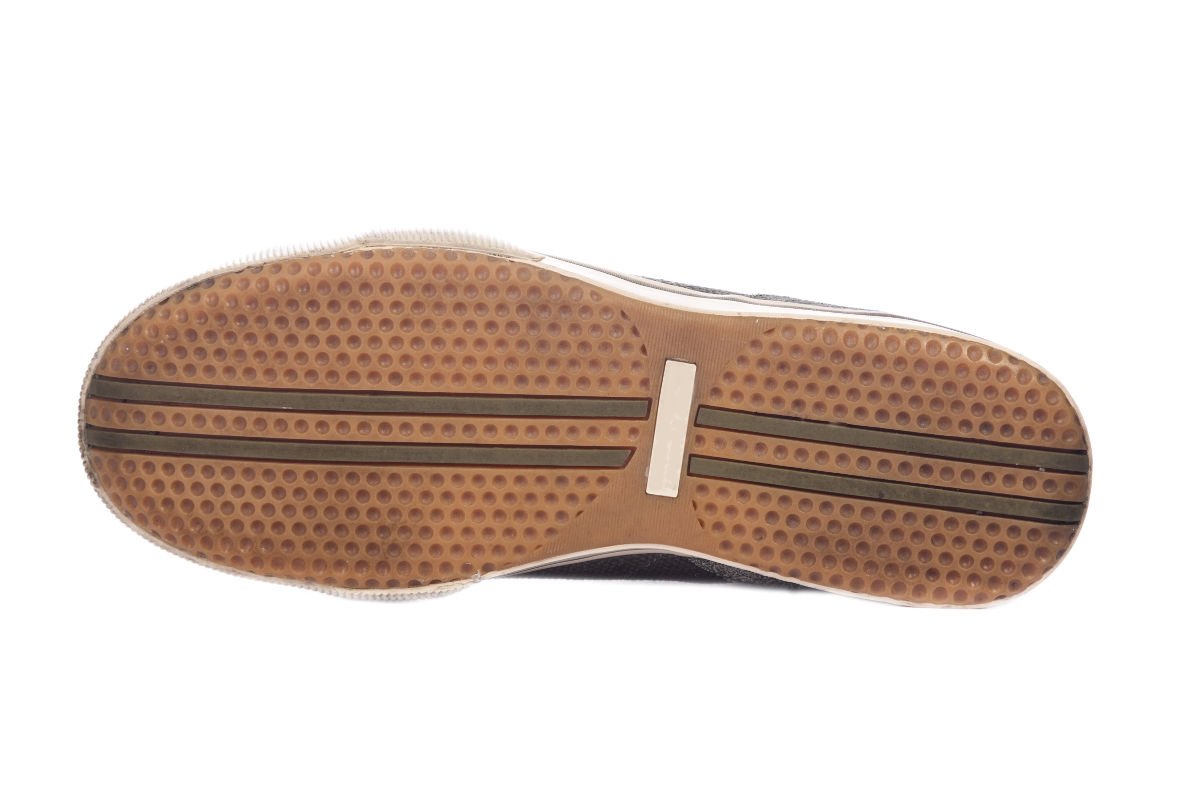
The grass court is generally a surface on which the traction is rather low. Dew in particular can make the court very slippery. Therefore, you should wear tennis shoes that give you good grip.
In this case, there are shoes that are only used on grass. They are equipped with small nubs on the outsole. As the ground is soft, the shoes hardly wear out and are therefore durable. Make sure that you do not wear shoes with a low profile on the grass. This could damage the court.
Carpet Court Tennis Shoes
In most tennis halls you will find courts with a carpet floor. The upper layer is made of velour, a non-slip material. Here you could stumble and fall over with profiled shoes. In order to play safely on the carpet, it is important that you choose tennis shoes without profile.
These have a smooth sole that allows you to move around the hall without any problems. Often the corresponding models have the expression “indoor” in the product description.
You should also make sure that the sole of the shoes has a light color. Suitable soles are marked with the addition “Non Marking”. Otherwise there is the risk that you leave colored stripes on the carpet.
2. Stability
The second criterion that you have to consider when choosing new tennis shoes is the stability of the shoes. In almost every rally, you have to react quickly to your opponent’s shot.
As a result, your legs are sometimes subjected to extreme stress. This is especially the case with rapid changes of direction and jerky movements.
You can recognise good tennis shoes mainly by their basic structure. In the first moment the shoes may feel a little stiff for you. But that is a good sign, because they offer you all-round protection.
Arch Support
The middle part of the shoes is of great importance. The arch should be made of a stable material. It is often made of one piece of thick plastic. You can check this by trying to kink a shoe. Usually only the front part of the shoe bends.
Lateral Support
When you hit a ball, your foot is pressed against the lateral side of the tennis shoe with great force. For this reason, the shoe should have reinforced sides to counteract this force. They ensure that your foot does not break out of the shoe, thereby reducing the risk of injury.
Heel Counter
To protect your foot from behind, most models are equipped with a robust heel counter. It should not be possible to push it in with your bare hand. In combination with the other two sides, they give the tennis shoe the necessary stability.
Forefoot
Since the forefoot area is not subject to such strong forces, it is made up of more flexible materials. The big advantage for you is that you can roll your foot like with a normal shoe. Therefore the playing comfort is much higher.
3. Cushioning
The cushioning of the tennis shoe is another important factor that you should remember. Because on the tennis court, your legs are put under a lot of strain. This can quickly lead to joint problems. It is therefore crucial that you pay attention to good cushioning.
Function
In principle, the shoe supports you during the game by cushioning all shocks and absorbing impacts. Not only your joints but also your back is protected. You can therefore prevent joint or back problems in this area.
Level of Cushioning
In general, the level of cushioning depends on the Surface for which the individual shoes are suitable. The following applies: The harder the surface, the greater the cushioning must be.
Accordingly, tennis shoes for the hard court have a very high degree of cushioning. In comparison, models for the clay court and the carpet court have a medium level of cushioning.
Since the surface of the grass court is rather soft, the matching shoes have a lower degree of cushioning.
Construction
A high quality tennis shoe has a cushioning system that is made up of several layers. This is basically the outsole, the midsole and the insole.
Of these three soles, the midsole provides most of the cushioning. It is particularly thick in the rear heel area, because that is where your ankle is located. This is where the shock is absorbed to a maximum, so the shoe provides optimum relief for your joint.
At the forefoot, the midsole is slightly thinner. The reason is that the toes and the ball of the foot need more room to move as much as possible. Nevertheless, the cushioning layer is sufficient to protect the foot.
Interior
Also be sure to take a look inside the tennis shoes. The padding of the tongue and the inner walls should be soft and comfortable. It is also helpful if the inner sole can be easily removed. So you can replace the sole with individual insoles if necessary.
4. Fit
For perfect comfort on the court, it is important that the tennis shoe fits your foot shape. Overall, the shoe should surround your foot evenly so that it has a stable fit in the shoe.
Make sure that your foot is flush with the inside of the shoe. Too much room to move at the midfoot will cause your foot to slip back and forth in the shoe. In the worst case, your foot could twist and you would suffer a serious injury.
On the other hand, the shoe should not press too hard. Because then the friction is too high and you will get blisters on your feet. With the appropriate lacing you have the possibility to adjust the fit of the shoe looser or tighter.
On the other hand, your toes need a little more room to move for a comfortable feeling. When stopping, they can slip forward in the shoe.
It would be a painful feeling if the tips of your toes were to press directly against the inner side. It is therefore advisable to leave about half an inch of space in this area. It is therefore better to order the shoe one or half a size larger.
Tip: We recommend that you always try on all tennis shoes with the socks and bandages you wear on the court. Also test the shoes extensively by simulating typical movements. This will give you a good first impression.
5. Upper Material
The upper material is the flexible part of the tennis shoe. First and foremost, it ensures that your feet do not sit rigidly in the shoe, but can unroll easily.
As a second function it takes over the ventilation of your feet in the shoes. The hot and stale air can thus escape. At the same time new fresh air flows into the shoes. Here you have the choice between two different materials:
Synthetic Tennis Shoes
Many tennis players prefer synthetic materials. Perforated fabrics make the shoe extremely breathable and offer you good air circulation. In addition, there is a wide range of material combinations that have different characteristics.
For example, mesh fabrics have a high air permeability. Furthermore, textiles provide a soft and comfortable padding. Then there are fabrics in which fibres of Kevlar have been added. They are extremely light and durable.
Leather Tennis Shoes
Leather shoes have enjoyed great popularity in the past. Some models are still available in classic leather style. However, leather tennis shoes are less breathable and not as durable as shoes made of synthetic materials.
6. Weight
If you have made a shortlist of models, you should also consider the weight of the shoes in your decision. Here you have to make a compromise between speed and stability.
For example, if you are a player who often slides into the ball, a more stable model is best suited to you. These shoes are solidly built and therefore have more weight.
If you prefer more speed on the court, you can go for lighter tennis shoes. In addition, you save valuable energy during longer rallies because you can move more easily. However, you should be aware that these shoes are made of a thinner material and that stability suffers as a result.
7. Durability
Before buying a tennis shoe, you should make sure that the model is made of resistant materials. Also make sure that the workmanship is of high quality.
Before you go out on the court with your new shoes for the first time, we recommend to impregnate the shoes. This protects the upper material of the shoe and extends its durability.
In order to keep the tennis shoes durable, our tip is to clean them regularly.
Tip: It is best to clean the shoes by hand with an appropriate brush. The shoes should not be put in a washing machine. There the soles could become deformed and the shoes would no longer be usable.
How Long Do Tennis Shoes Last?
It is not possible to answer this question directly at the outset. This is different for every player. Two important factors that influence durability are your playing intensity and the surface you are playing on.
It is well known that most wear and tear takes place on the outsole. Over time, the tread rubs off bit by bit. If you see that the outsole has worn out and you no longer have a firm grip on the court, you should definitely change your shoes.
Also check that the cushioning of the sole is intact. This loses its elasticity over a longer period of time. If you notice that the cushioning properties have deteriorated, it is also time for new shoes.